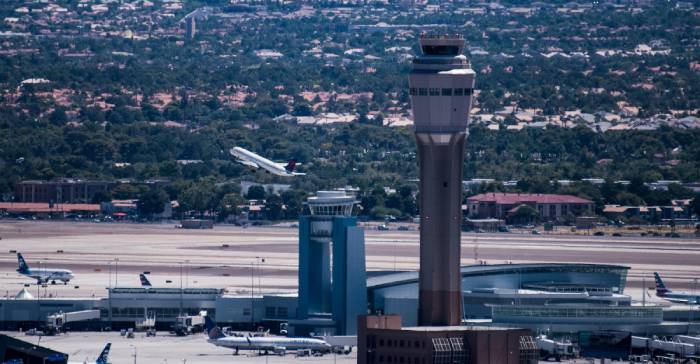The Federal Aviation Administration announced Friday that mobile phone operators have agreed to another delay in the rollout of some 5G services to avoid interfering with aviation technology.
The FAA says that the one-year wait will give them more time to complete the permanent fix, which involves replacing or filtering the radar altimeters that measure an aircraft’s distance from the ground. Although the new technology promises higher speeds, aviation officials claim the radio waves can be picked up by the radar altimeter in some cases.
The new schedule has raised worries among big airlines and regional jet operators, the latter of which will be subject to an even more aggressive deadline by the end of 2022. The FAA is “pressuring airlines to meet implausible deadlines,” according to the Regional Airline Association.
“Airlines are being asked to shoulder the blame for a process that should have been foreseen years ago before telecom expanded into aviation used spectrum,” said RAA CEO Faye Malarkey Black. “Our government partners should not deflect shortfalls in interagency coordination onto the airline industry.”
“Changes affecting avionics performance have always relied upon well-considered industry consensus standards, exhaustive testing and critical FAA certification oversight, often measured in years,” Airlines for America, a trade group that represents major airlines, wrote in a letter.
The letter states, “We have serious concerns that the Federal Aviation Administration (FAA) has placed the burden on the aviation industry to act in a way that would previously be considered, by the FAA itself, to be reckless in the context of design changes to safety-critical avionics.”
According to the letter, “jeopardized by the rushed approach to avionics modifications amid pressure from the telecommunications companies” would compromise safety.
The National Air Carriers Association, whose members include budget airlines, said it would continue to “express our concerns and figure out a way to most safely get the planes equipped in the ways that we need to in order to safely operate,” according to spokesman Dan Stohr.
The wireless operators willingly offered the extra year, according to the FAA. Smaller regional jets will be retrofitted “by the end of 2022,” and bigger jets will be retrofitted by summer 2023, according to the timeline.
According to CNN, AT&T has been working on developing “a more tailored approach to controlling signal strength around runways” for the C band, the section of radio airwaves required for 5G, in recent months.
“Though our FCC licences allow us to fully deploy much-needed C-Band spectrum right now, we have chosen in good faith to implement these more tailored precautionary measures so that airlines have additional time to retrofit equipment,” an AT&T spokeswoman stated, “We appreciate the FAA’s support of this approach, and we will continue to work with the aviation community as we move toward the expiration of all such voluntary measures by next summer .”
Verizon executive vice president Craig Silliman told CNN it “will lift the voluntary limitations on our 5G network deployment around airports in a staged approach over the coming months meaning even more consumers and businesses will benefit from the tremendous capabilities of 5G technology. “
“Today’s announcement identifies a path forward that will enable Verizon to make full use of our C-Band spectrum for 5G around airports on an accelerated and defined schedule,” said Silliman.
This year, industry and government officials have attended a series of discussions on the subject, the most recent of which was held on Friday.
- Cougars Coach Kelvin Sampson Chases 800th Career Victory in NCAA Finals - April 8, 2025
- How to Check IIT GATE 2025 Results Online? Complete Guide - March 19, 2025
- Deadmau5 Sells Song Catalog for $55M to Launch New Music Venture - March 6, 2025



